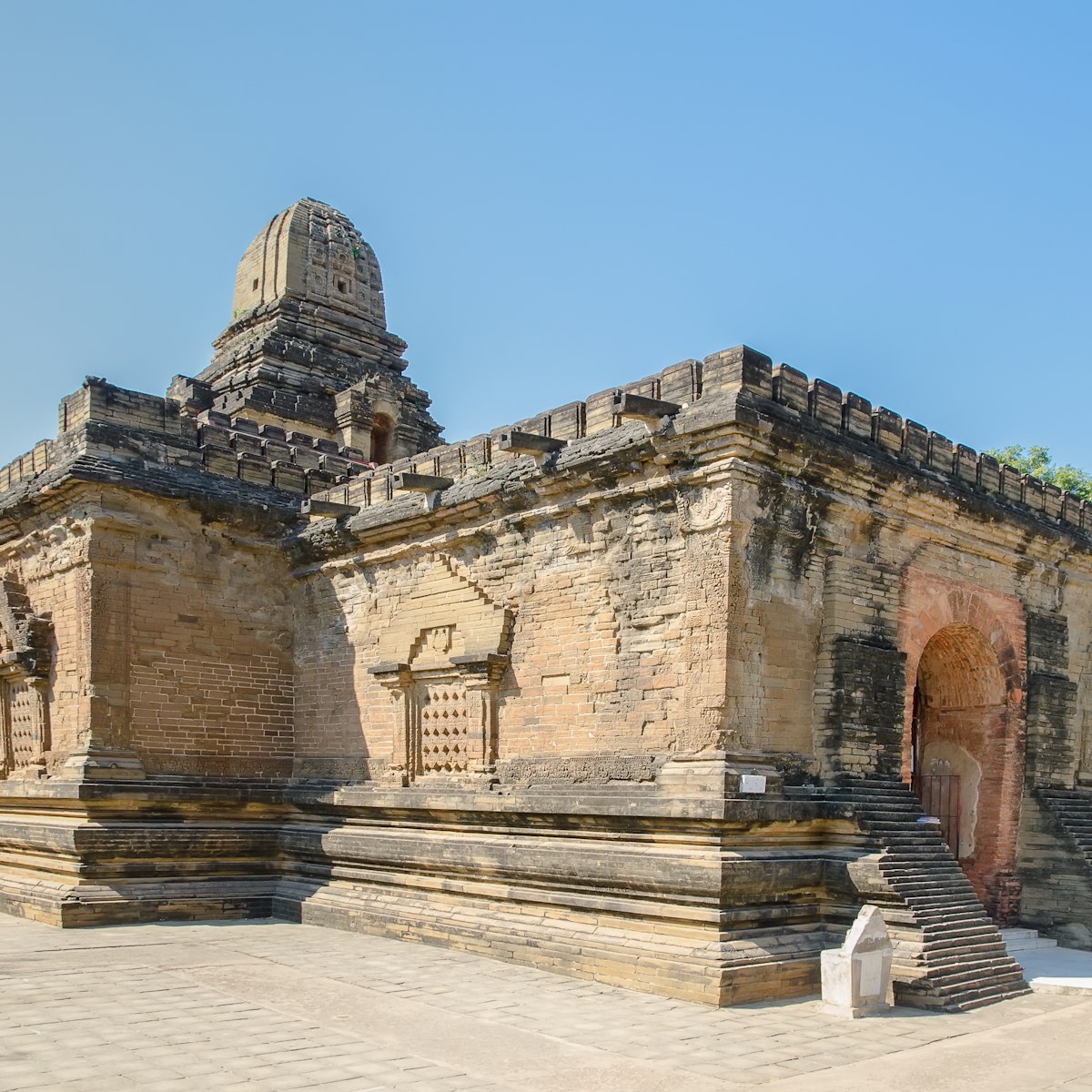Just to the left of the road as you enter Myinkaba, Gubyaukgyi (Great Painted Cave Temple) draws visitors to see the well-preserved, richly coloured paintings inside. These are thought to date from the temple’s original construction in 1113, when Kyanzittha’s son Rajakumar built it following his father’s death. In Indian style, the monument consists of a large vestibule attached to a smaller antechamber. The temple was damaged in the 2016 earthquake and some parts are still under restoration.
The fine stucco work on its exterior walls is in particularly good condition. Perforated, Pyu-style windows mean you’ll need a powerful torch to see the ceiling paintings clearly. If it’s locked during low season, ask in the village for the keyholder.
Next to the monument stands the gilded Myazedi (မြစေတီ, Emerald Stupa). A four-sided pillar in a cage between the two monuments bears an inscription consecrating Gubyaukgyi and written in four languages: Pyu, Mon, Old Burmese and Pali. It has great linguistic and historical significance, as it establishes the Pyu as an important cultural influence in early Bagan and relates the chronology of the Bagan kings, as well as acting as a ‘Rosetta Stone’ to allow scholars to decipher the Pyu language.







